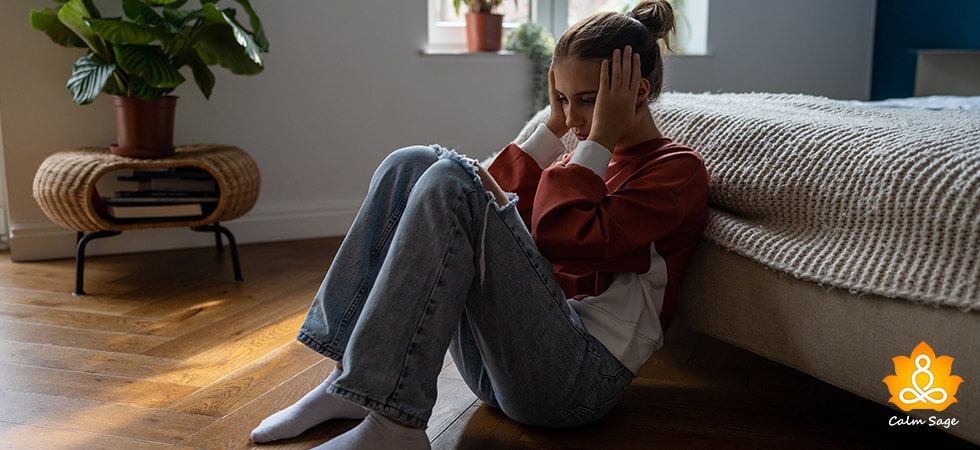The Different Levels Of Anxiety You Should Know About

Anxiety is more than just nerves and unease about the past, present, and future. Anxiety is one of the most misunderstood mental health conditions. Typically, all of us struggle with anxious feelings at some point in our lives, and to be honest, anxiety, once in a while, is normal and good for us.
But when it persists for a long time and when it begins to interfere with our daily functions and routine, it’s when we need to be concerned. Anxiety disorders, often described as excessively worrying and hyper-alertness are some common symptoms that we need to be concerned about.
The onset of anxiety can begin early in life (as young as a pre-teen) and can have different levels. The levels of anxiety can range from mild and moderate to severe and panic.
These different levels of anxiety can also be influenced by one’s personality traits, coping skills, past experiences, and levels of distress. In this article, we will take a look at the four different levels of anxiety and how you can manage them.
The Four Levels Of Anxiety

The four levels of anxiety can be:
- Mild
- Moderate
- Severe, and
- Panic level
1. Mild Anxiety
Mild anxiety is quite common and when you have mild anxiety, you’re more open-minded albeit a little stressed. You can experience mild anxiety on a day-to-day basis such as waiting for a new job interview or experiencing jitters before public speaking.
The symptoms of mild anxiety can include:
- Fidgeting
- Irritability
- Sweaty palms
- Hyper alertness
Mild anxiety can be motivational and can push you to focus on the solution more than the problem you’re facing. For example, when you’re lost in a new city, you might be motivated to look for a place where you can ask for directions.
Mild anxiety fades when you find a solution and doesn’t last for more than a few hours. This level of anxiety can also be situational anxiety. Even though this level of anxiety is not typically harmful, it can still impact your functioning.
Mild anxiety can also manifest as social awkwardness and shyness. If left unaddressed, mild anxiety can level up and turn into moderate anxiety.
2. Moderate Anxiety
A moderate level of anxiety is when you focus more on the anxiety trigger and ignore everything else near you, including the solution. For example, you take your kid to the park and lose sight of them; that’s when you experience moderate anxiety. The symptoms of moderate anxiety can include:
- Increased heartbeat
- Dry mouth
- Sweating
- Stomach pain
- Nausea
Other symptoms can include faster speech and exaggerated movements. Nervous habits such as biting your nails, fidgeting with an object, and tapping your foot are also common occurrences in this level of anxiety. Your focus is on a single trigger, in this case, finding your child. Once you accomplish this, your anxiety will fade away.
Moderate anxiety symptoms are more persistent than the symptoms of mild anxiety. However, you can function better with moderate anxiety than when struggling with severe anxiety. You might feel on edge all the time, might struggle with relaxing, and might excessively worry but it won’t last forever.
Moderate anxiety can interfere with your functioning but with some self-help strategies, moderate anxiety can be easily tamed, unlike severe anxiety.
3. Severe Anxiety
Severe anxiety, the third level of anxiety, is quite intense and can have extreme symptoms such as:
- Rapid heart rate
- Chest pain
- Headache or migraine
- Vomiting
- Diarrhea
- Trembling
- Racing thoughts
- Erratic behavior
- Experiencing a sense of dread
An example of severe anxiety can be; when you hear of a loved one being in an accident or when you experience a sudden job loss, you feel out of balance and might experience the above-mentioned symptoms. When you’re struggling with severe anxiety, your logical thinking might be severed and your ability to focus might be impaired.
You might also not be able to focus on your basic needs and any attempts to distract you might not be successful. Severe anxiety can be unnerving and the symptoms of this anxiety can border on anxiety disorder.
People with severe anxiety might have higher distress levels and might face trouble functioning normally. More often than not, the symptoms of severe anxiety follow or co-occur with the symptoms of major depressive disorder.
Severe anxiety symptoms are frequent and if left untreated can cause panic-level anxiety. People with this anxiety might need professional intervention. Lack of professional help and healthy coping skills might drive them to alcohol and other unhealthy coping techniques.
4. Panic Level Anxiety
Panic-level anxiety, the fourth and last level of anxiety, can be harmful and challenging to deal with. This level of anxiety quickly overwhelms you and your ability to function normally. The symptoms of panic-level anxiety can include:
- Feeling extreme fear
- Heart palpitations
- Rapid breathing
- Nausea
- Dizziness
- Experiencing a fear of death
Panic-level anxiety can also trigger one’s flight or fight response. This anxiety might take away your ability to think clearly and logically. You might not be fully aware of the danger you’re facing or what your needs are at the moment.
Common (yet extreme) life stressors can trigger panic-level anxiety. Some common examples can include being a victim of a trauma, living through a life-and-death situation, etc. Panic-level anxiety, if left unaddressed, can lead to developing panic disorder.
A panic disorder can be described as recurring and sudden episodes that leave you feeling out of control and shaken to your core.
Panic-level anxiety might need professional intervention, medications, and healthy coping skills to manage. Sometimes, the three might be recommended together for maximum help.
Quick Tips To Manage Anxiety

Here are some quick ways you can manage the symptoms of anxiety. Depending on the level of anxiety, different ways can be employed to manage anxiety.
For example, if you have mild or moderate-level of anxiety, then with some relaxation exercises and meditation, it can be managed whereas, if it’s severe anxiety then therapy, medication, and self-help techniques – combined – might be recommended.
The combination of therapy and self-help strategies can be most beneficial for people living with anxiety. Some common life stressors can trigger your anxiety.
The level of anxiety mostly depends on your stressor, your personality characteristics, and your self-esteem levels. While in some cases meditation and other simple interventions can help, in others, professional help might be needed.
Do not be afraid to seek help if you need it. Anxiety can be good if moderate amounts but when it begins to affect your living, then it can be unhealthy. Frequent anxiety can cause severe distress and can turn into something more than just nervousness.
I hope this blog helped you understand the different levels of anxiety and how you can manage the symptoms of anxiety. For more, you can drop us an email at info@calmsage.com or DM us on social media. You can also share your thoughts with us in the comments below.
Take Care!




















